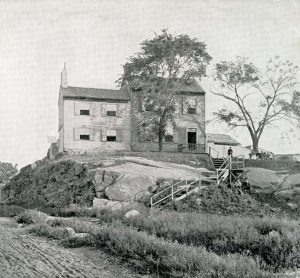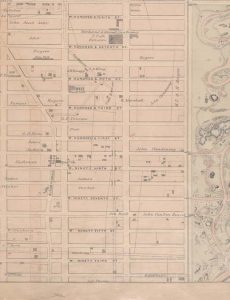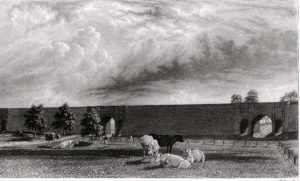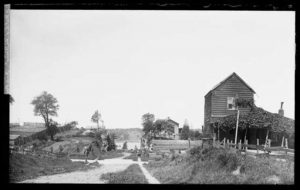Mid 1800s - From Farm to Village - Mid-1800s — From Farm to Village
In 1703, Bloomingdale Road was built to respond to increasing commerce in the village of Bloomingdale, located in the northern part of the neighborhood now. But for the most part, the natural topography of the Upper West Side proved resistant to development for much of the 18th and 19th centuries. It was very rocky and hilly, which made for smaller farms in its early days. Many steep hills were made of schist, a rock that is very hard and difficult to cut through. After the Croton Aqueduct was built in the 19th century, the arrival of sanitary water for drinking and bathing made more development possible.
- 1879 farmhouse on Broadway at 84th Street
- 1868 map of the UWS. Croton Aqueduct seen between Columbus and Amsterdam where the arches are.
- Aqueduct 19th Century
- 1890 photograph of West End Avenue, looking west toward the Hudson.




